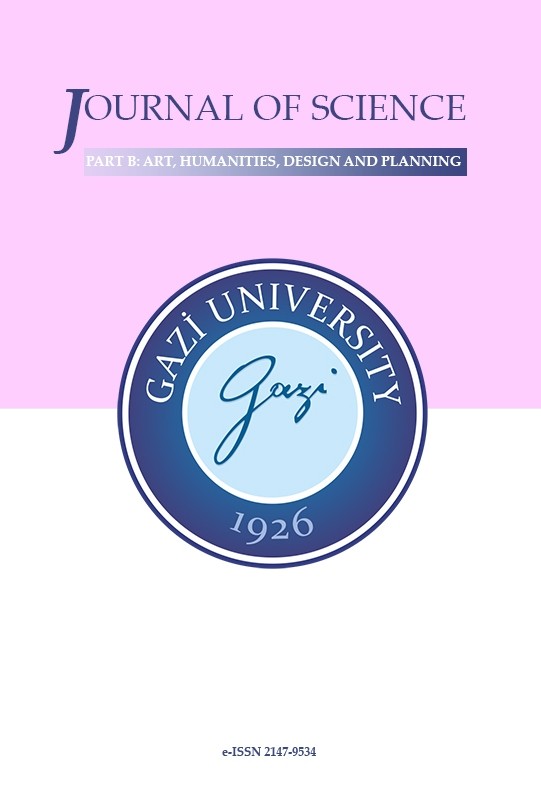SUSTAINABLE DESIGN APPROACHES FOR LIVEABLE WATERFRONTS
SUSTAINABLE DESIGN APPROACHES FOR LIVEABLE WATERFRONTS
Waterfront, Urban Environment, Design Sustainability,
___
- References1. Marta Moretti, “Valorisation of Waterfronts for Sustainable Development in Cities on Water,” IV Project Meeting, WaRe–Waterfront Regeneration, Learning from European Best Practices for a Sustainable Urban Life. Izola, Slovenia, (2007).
- 2. Stella Kostopoulou, “On the Revitalized Waterfront: Creative Milieu for Creative Tourism,” Sustainability, 5, 4578-4593 (2013).
- 3. Oriana Giovinazzi, Sonia Giovinazzi, “Waterfront Planning: A Window of Opportunities for Post-Disaster Reconstruction,” International I-Rec Conference Building Resilience: Achieving Effective Poat-Disaster Reconstruction, Christchurch (2008).
- 4. The Urban Land Institute, “Urban Waterfront Development”, The Urban Land Institute, New York (1983).
- 5. Doshik Yang, “Waterfronts: Spatial Composition and Cultural Use,” Doctor of Philosophy Thesis, The Bartlett School of Planning, University College London (2006).
- 6. Paul James, Liam Magee, Andy Scerri and Manfred Steger, “Measuring Community Sustainability: The Social Life Questionnaire,” Urban Sustainability in Theory and Practice: Circles of Sustainability, Routledge (2015).
- 7. “Trends in Sustainable Development,” Towards Sustainable Consumption and Production, United Nations Publication, New York (2010).
- 8. Stephen McKenzie, “Social Sustainability: Towards Some Definitions,”, Hawke Research Institute Working Paper Series No 27, Hawke Research Institute University of South Australia, Magill (2004).
- 9. “World Urbanization Prospects Report,” United Nations Department of Economic and Social Affairs, 2014, February 2019.https://www.un.org/development/desa/en/news/population/2018-revision-of-world-urbanization-prospects.html
- 10. Rob Quick, Rob Thomas, “Sustainable Development,” The Vale of Glamorgan UDP, Supplementary Planning Guidance, The Vale of Glamorgan Council (2006).
- 11. Nabiollah Kolbadi, Mahmoud Mohammadi and Fahimeh Namvar, “Smart Growth Theory as One of the Main Paradigms of Sustainable City,” JK Welfare & Pharmascope Foundation, International Journal of Review in Life Sciences, 5(9), 209-219 (2015).
- 12. Meltem Yılmaz, “Sustainable Design in Architecture,” A International Design Conference, Eco Design Implementation Workshop, Dubrovnik, Croatia (2006).
- 13. Adalberto Vallega, “Urban Waterfront Facing Integrated Coastal Management,” Ocean&Coastal Management, Vol. 44, pp. 379-410 (2001).
- 14. Spiro Kostof, “The City Assembled: The Elements of Urban Form through History,” A Bulfinch Press Book, London (1992).
- 15. Doshik Yang, “Waterfronts: Spatial Composition and Cultural Use,” Doctor of Philosophy Thesis, The Bartlett School of Planning, University College London (2006).
- 16. “CABE,” The Value of Urban Design, A Research Project, London, Thomas Telford (2001).17. John McCarthy, “Tourism-Related Waterfront Development in Historic Cities: Malta’s Cottonera Project,” International Planning Studies, Vol. 9 No. 1, pp. 43-46 (2004).
- 18. William Burch, Neil Cheek, “Social Meaning of Water: Patterns of Variation,” from Field, R., Barron, C. and Long, F. (eds), Water and Community Development: Social and Economic Perspectives, Michigan, Ann Arbor Science, pp.41-53 (1974).
- 19. Matthew Gandy, “Rethinking Urban Metabolism: Water, Space and the Modem City,” City, Vol. 8, No. 3, pp. 363-379 (2004).
- 20. Rinio Bruttomesso, “Waterfronts: A New Frontier for Cities on Water,” Venice, International Centre Cities on Water (1993).
- 21. Oriana Giovinazzi, Sonia Giovinazzi, “Waterfront Planning: A Window of Opportunities for Post-Disaster Reconstruction,” International I-Rec Conference Building Resilience: Achieving Effective Poat-Disaster Reconstruction, Christchurch (2008).
- 22. Lindsey Miller, “Sustainable Waterfront Revitalization: Baltimore, San Francisco, and Seattle” Master’s Dissertation, Faculty of California Polytechnic State University, San Luis Obispo, CA, USA (2011).
- Yayın Aralığı: Yılda 4 Sayı
- Başlangıç: 2013
- Yayıncı: Gazi Üniversitesi
SUSTAINABLE DESIGN APPROACHES FOR LIVEABLE WATERFRONTS
MODULAR SYSTEM APPROACH IN DESIGN EDUCATION
Tugba DUZENLİ, Serap YILMAZ, Abdullah ÇİĞDEM
A REVIEW OF HAMMAMS OF THE SOUTHEASTERN REGION OF ANATOLIA
Emine EKİNCİ DAĞTEKİN, Zehra Gediz URAK
USING PARAMETRIC ALGORITHMS WITHIN THE CONTEXT OF ENERGY OPTIMIZATION OF BUILDING SKINS
Feyza Nur AKSİN, Semra ARSLAN SELÇUK
DOCUMENTING RURAL ARCHITECTURAL HERITAGE: ANKARA FETHIYE VILLAGE
Özlem SAĞIROĞLU, Arzu ÖZEN YAVUZ
Çiğdem ÇETİN, Gülnur BALLİCE, Zeynep TUNA ULTAV
Utilization of Mongolian GER’s spatial configuration in modern housing
